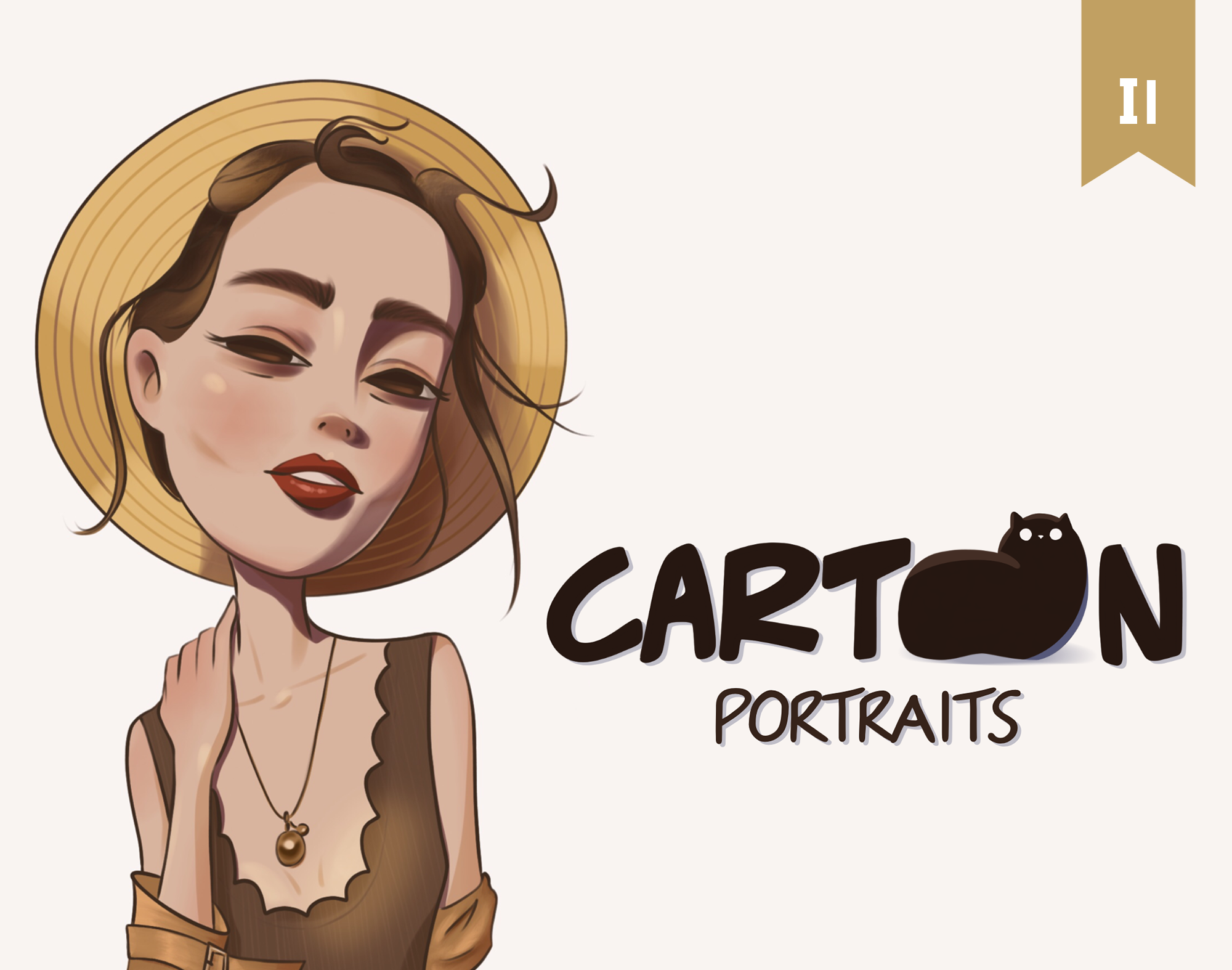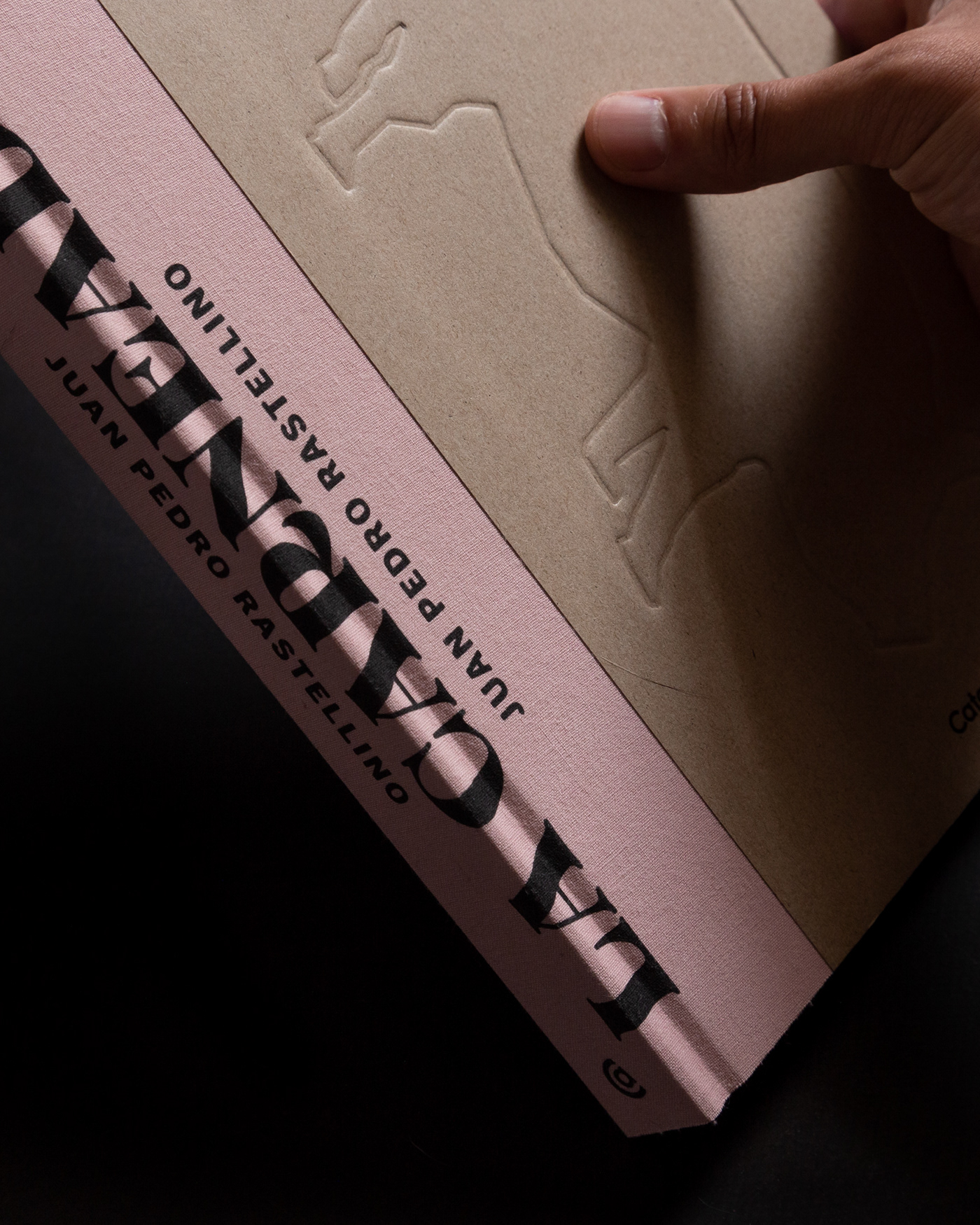
El libro narra la carneada de una chancha que el autor y un grupo de amigos crían en un campo de la provincia de Buenos Aires, durante todo un año, para elaborar embutidos de la más alta calidad. Cuando llegué al proyecto ya estaban tomadas todas las fotos (por Eduardo Torres y Joaquin Torres, con tono documental) y el texto redactado (por Juan Pedro Rastellino). Era un material impresionante. En la primera reunión con la editora surgió la idea de «esconder» algunas fotos y se me ocurrió que el libro tuviera un cuadernillo plegado y encuadernado sin refilar, en un papel de menor gramaje (más frágil), y que para acceder a las imágenes más explícitas el lector tenga que cortar las hojas con… algo. Recuerdo haberme ido de esa reunión muy contento de haber aportado ese concepto para un libro que sabíamos que iba a ser único, incluso antes de sentarme a tomar decisiones más gráficas como el formato, la elección tipográfica y la composición.
La cubierta es de cartón gris con cuño seco y la información del libro está impresa en serigrafía sobre tela, para que el cartón quede limpio, sin tinta alguna. Las cajas de texto empiezan y terminan con una línea tipográfica que recuerda a una costura para unir los bloques. La encuadernación es cosida con hilo rojo, similar al usado por Rastellino en sus embutidos. (English text at the end)
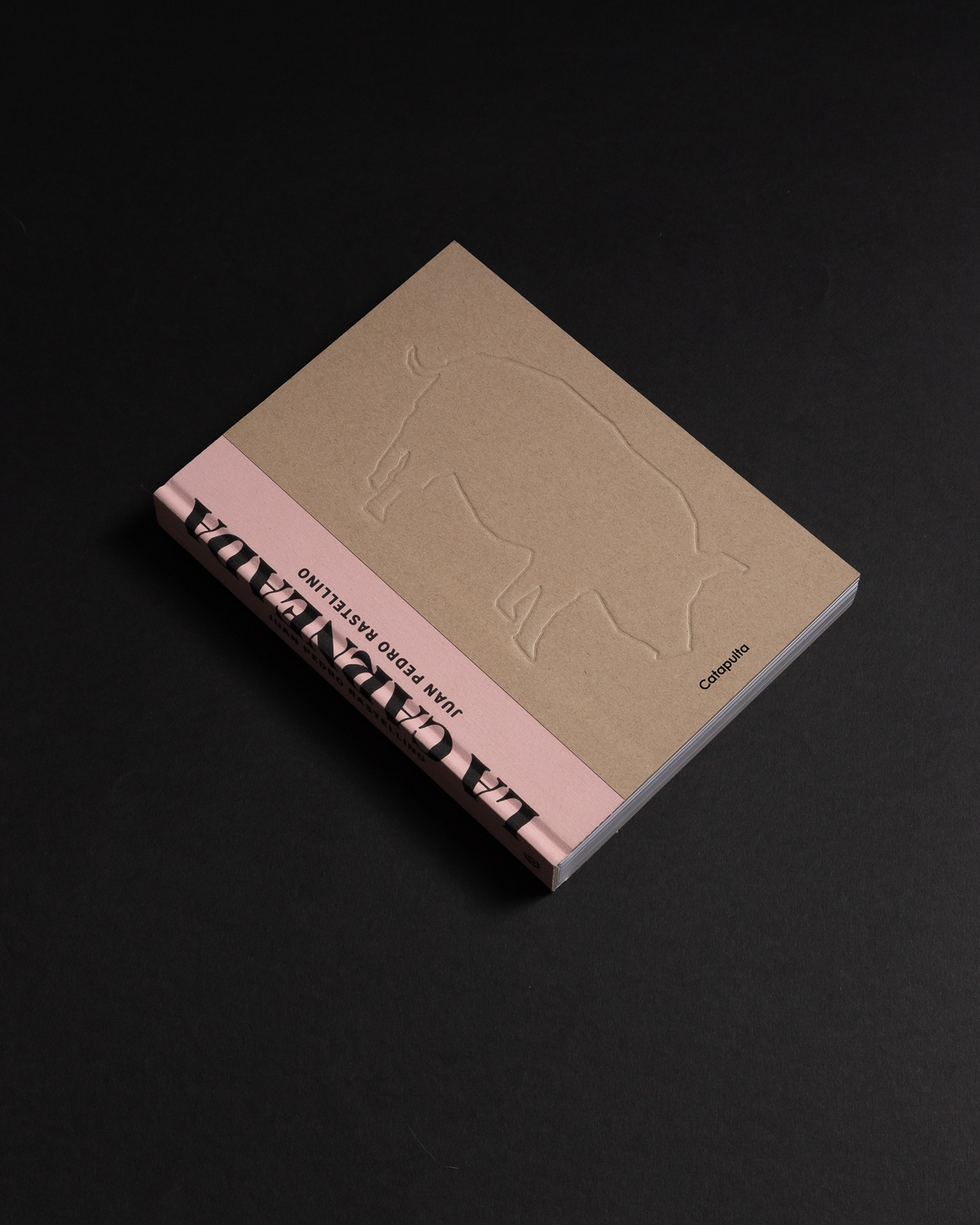
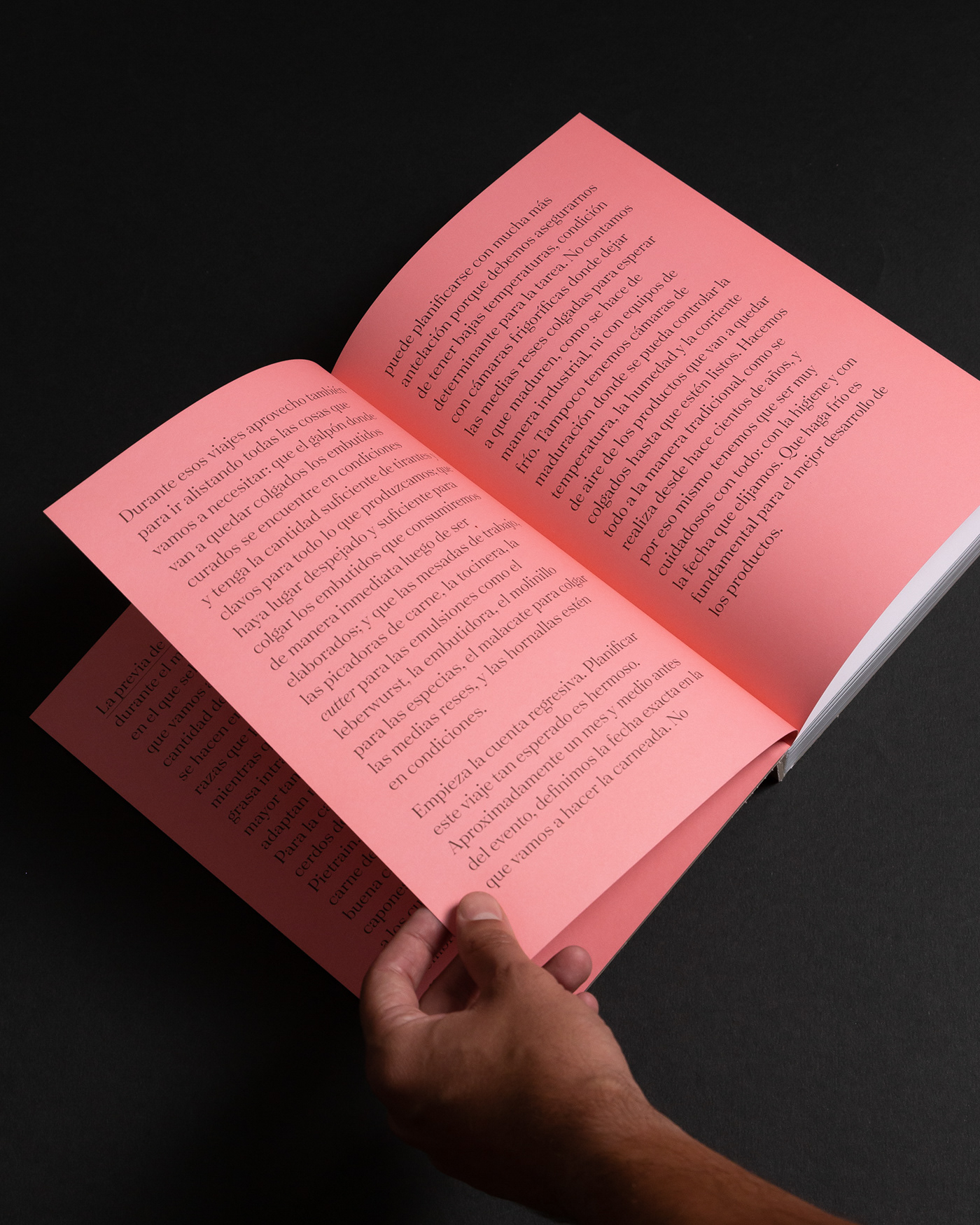
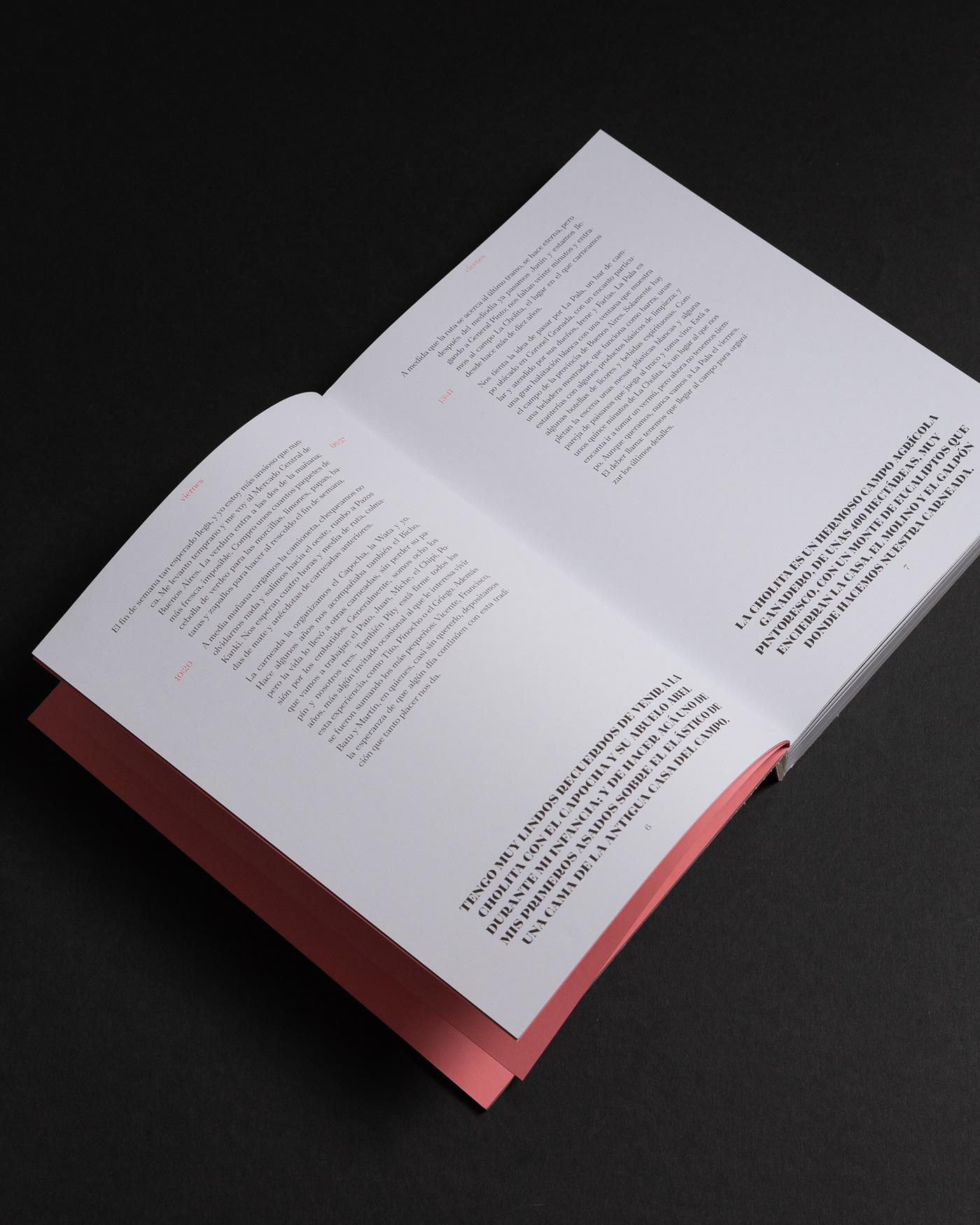
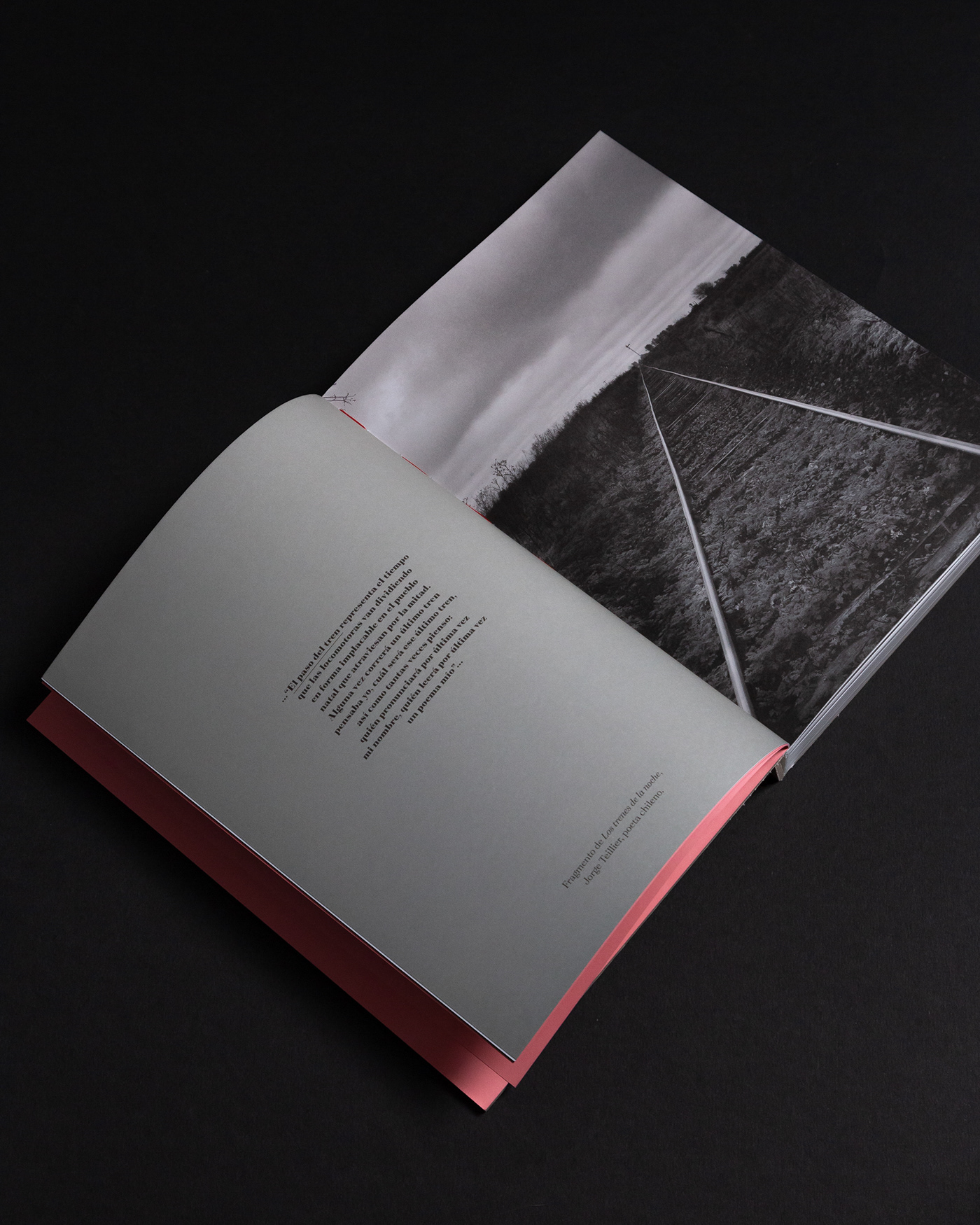

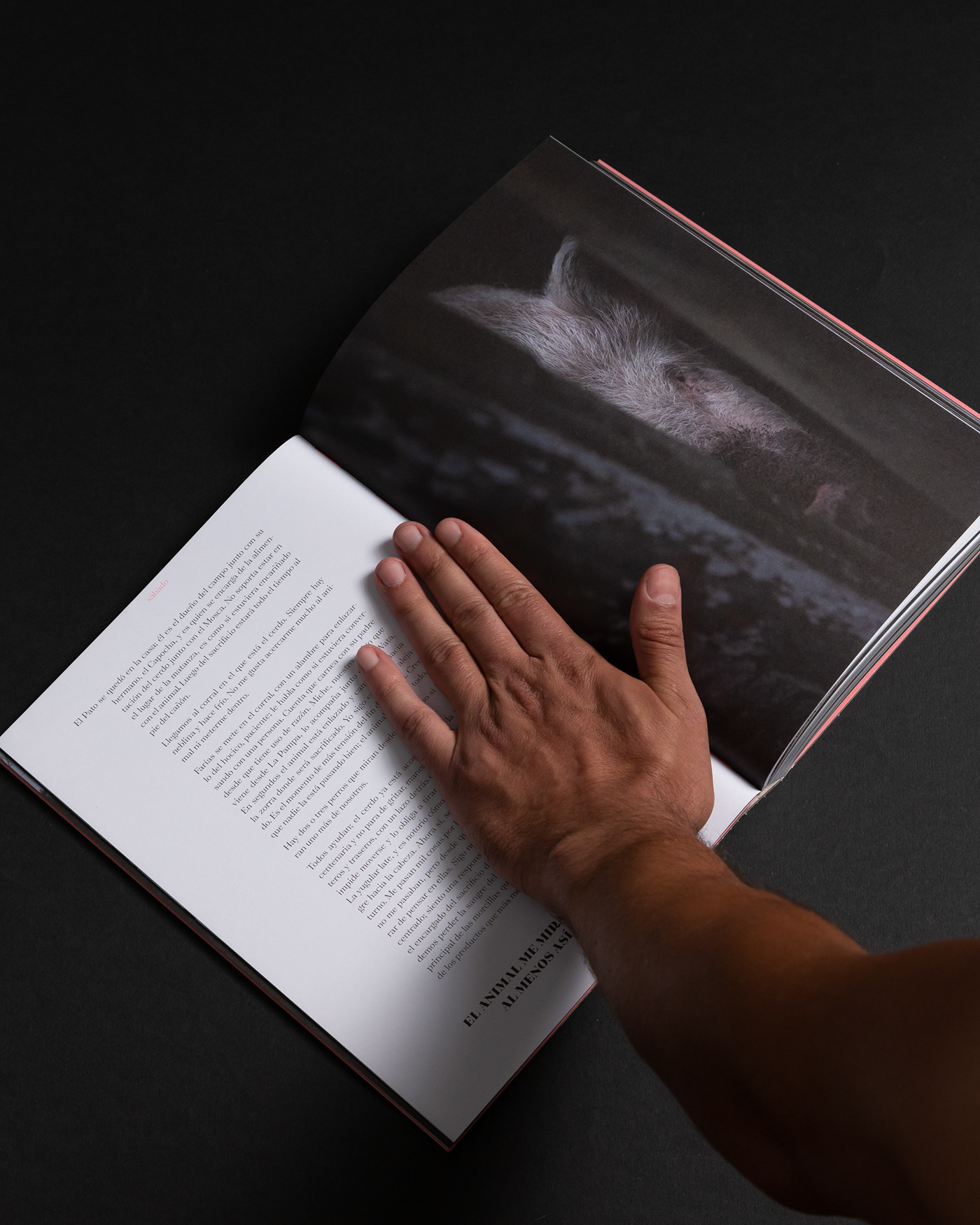
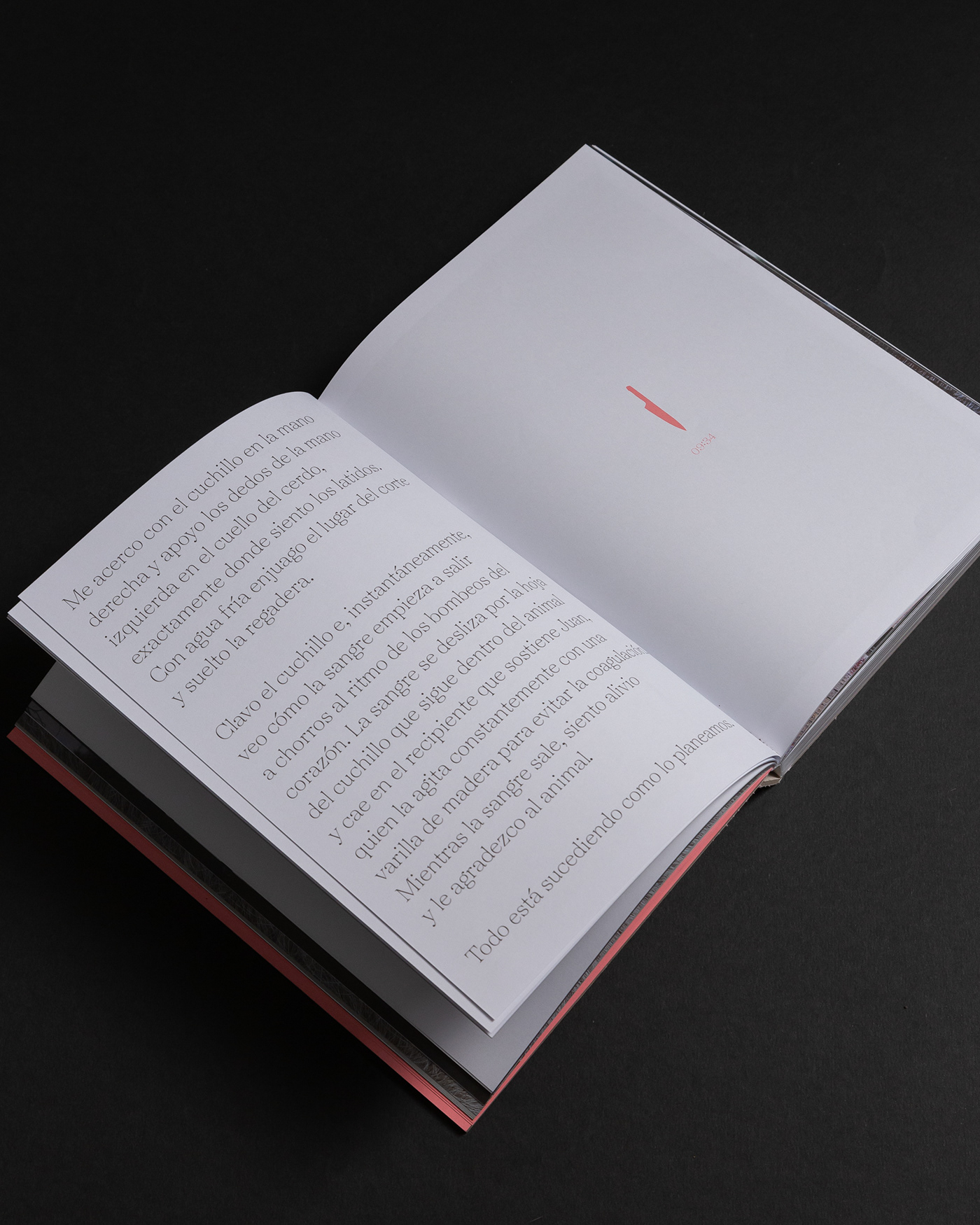
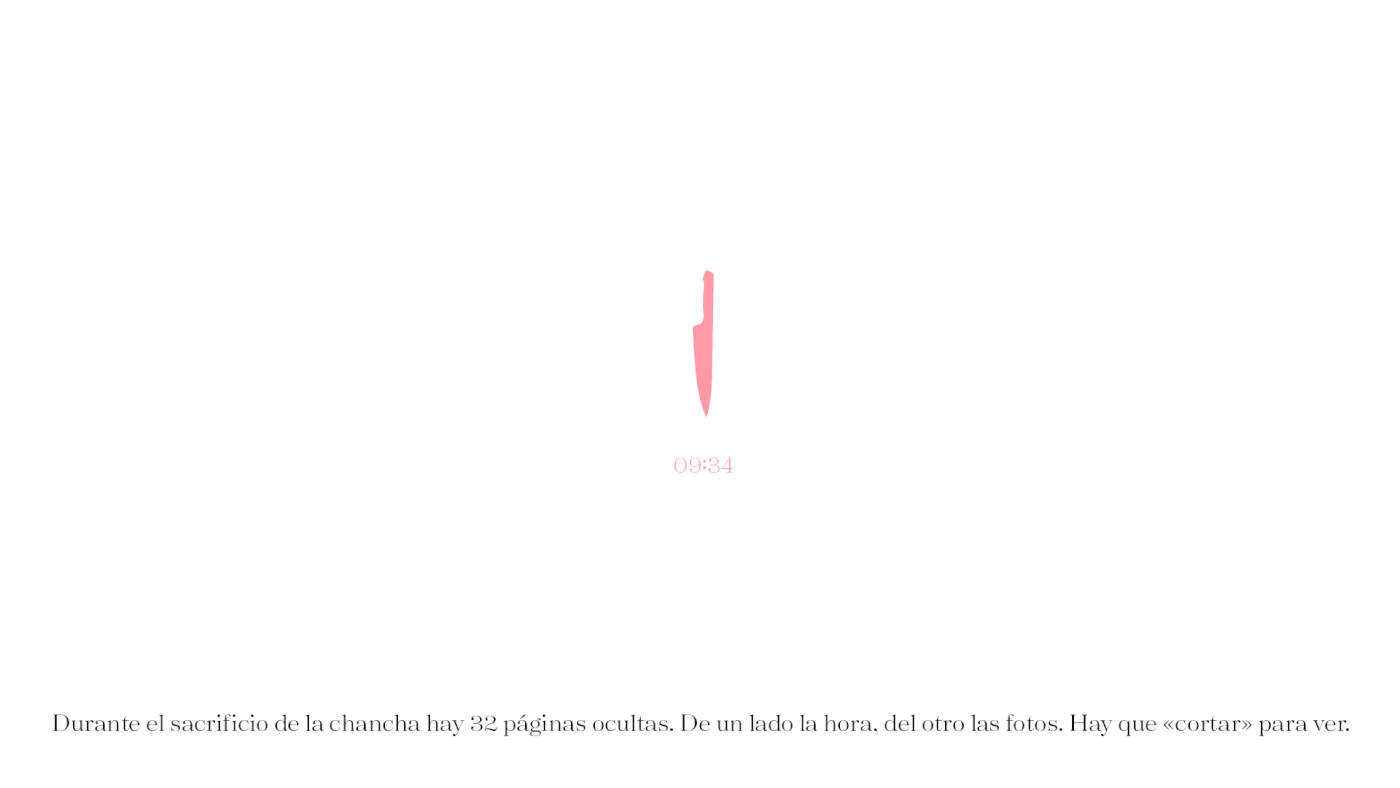
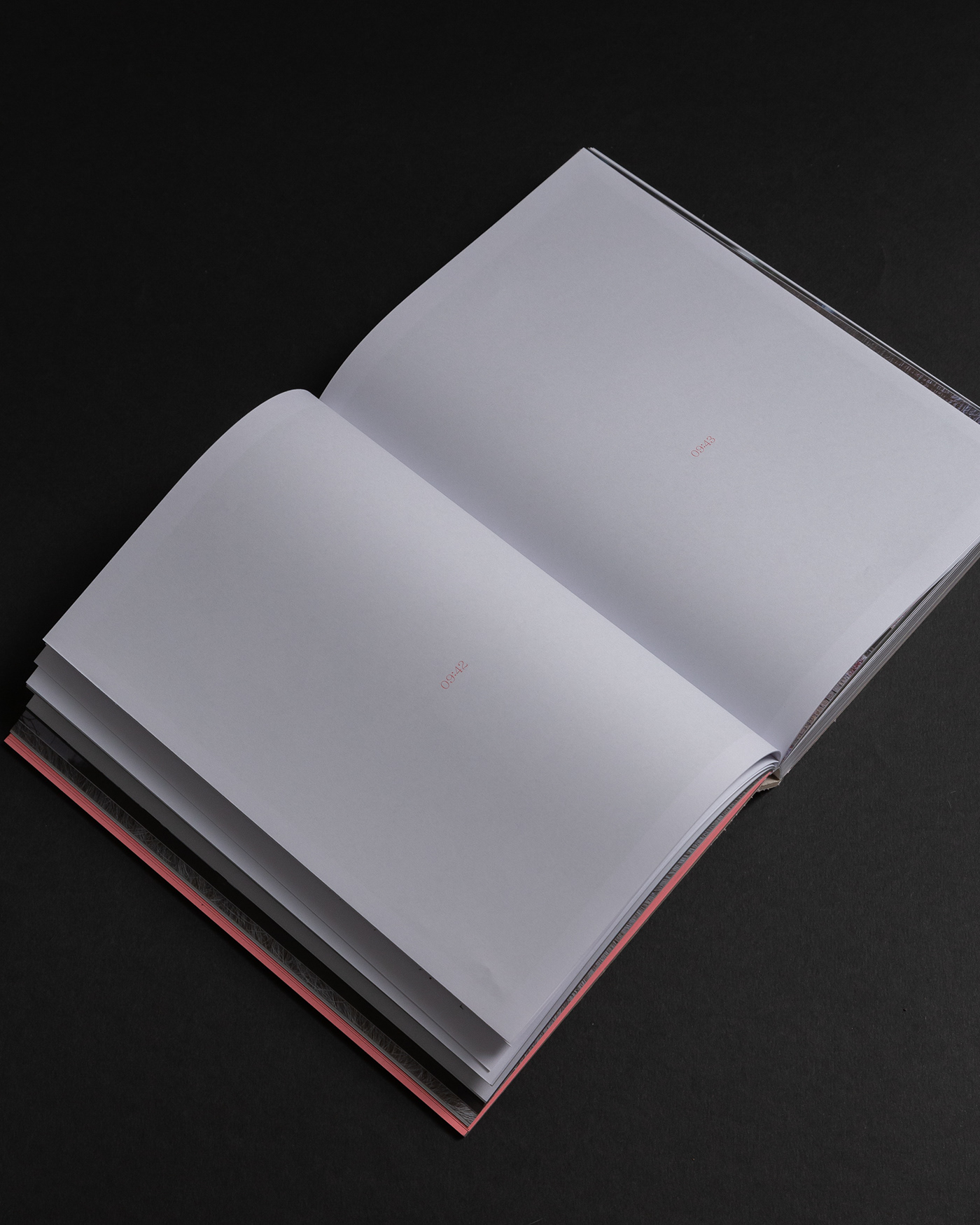
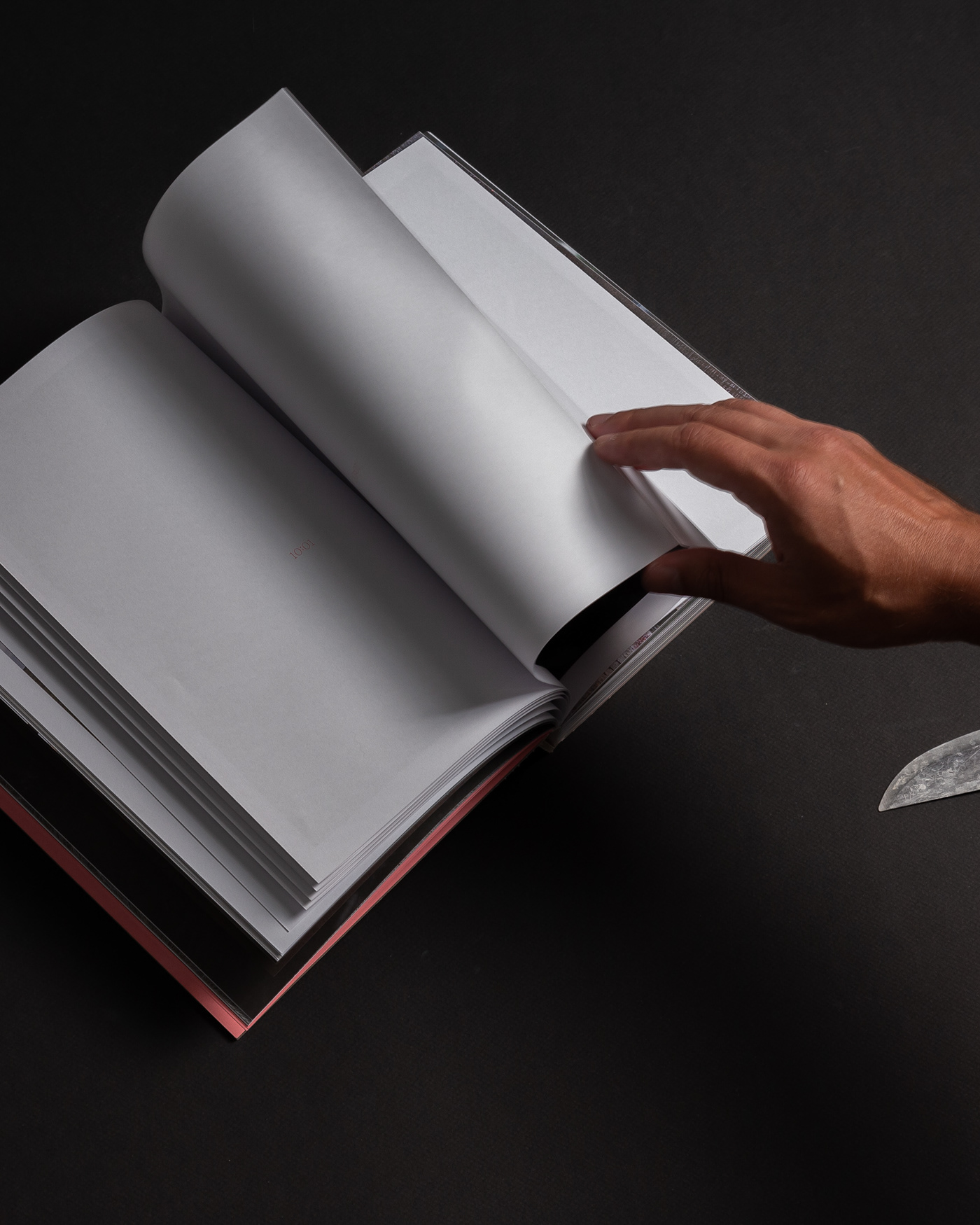
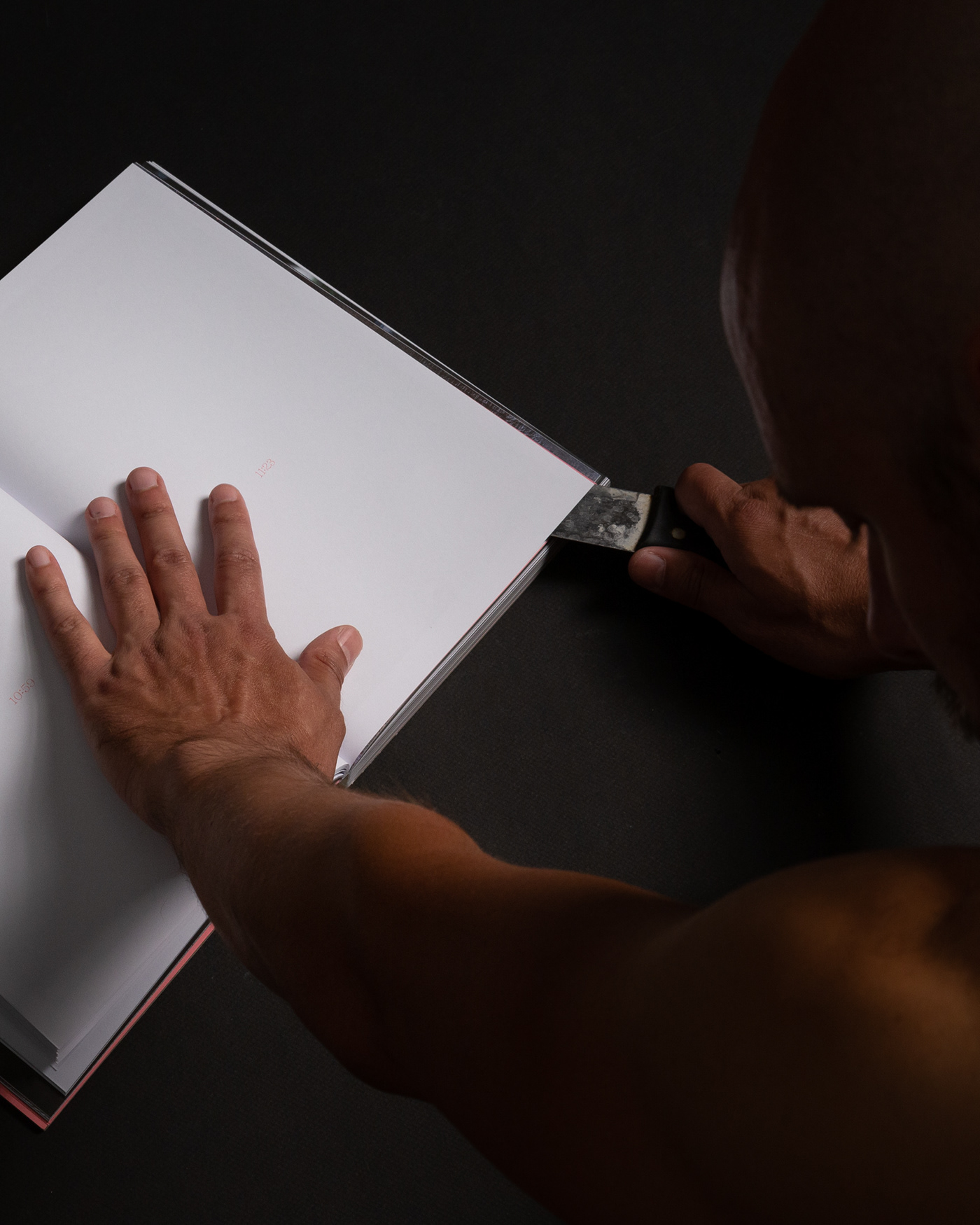
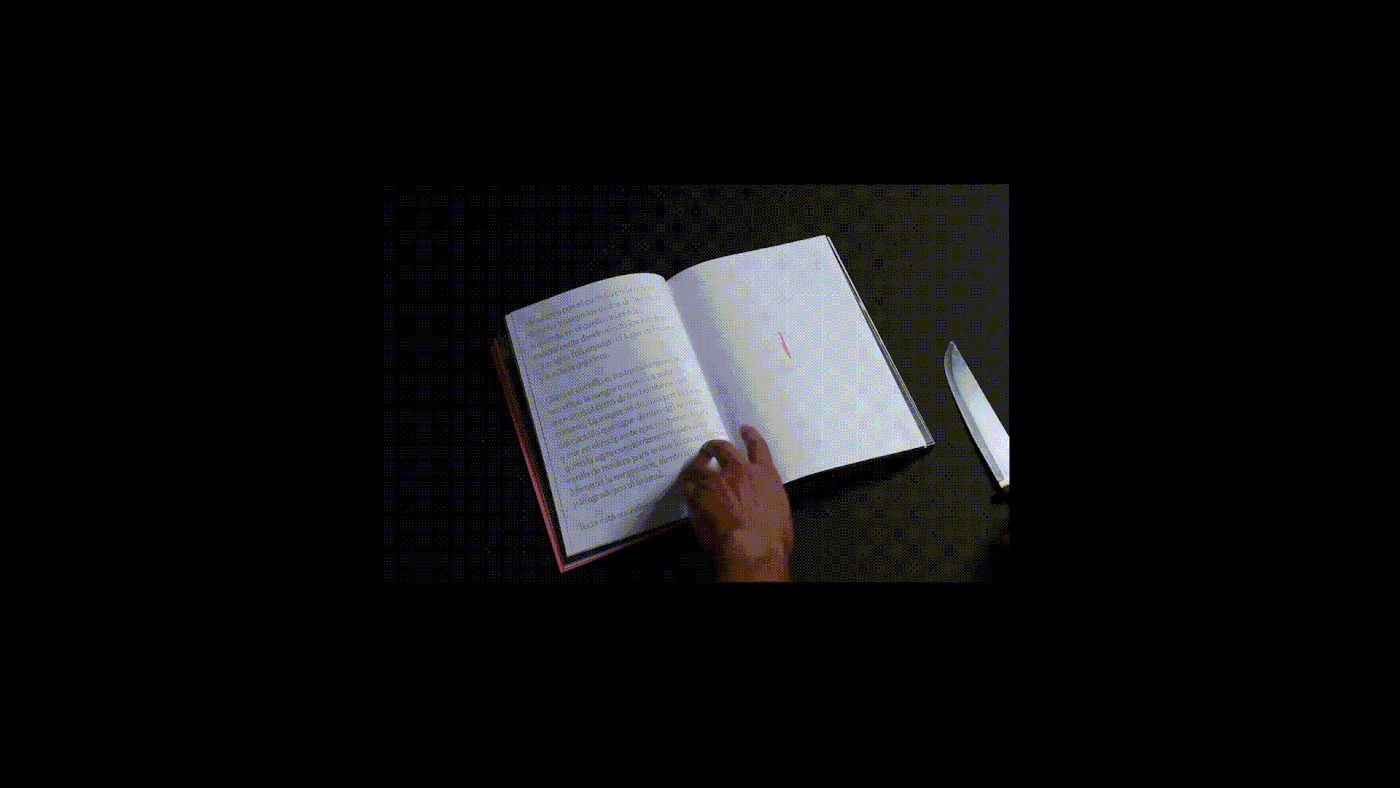
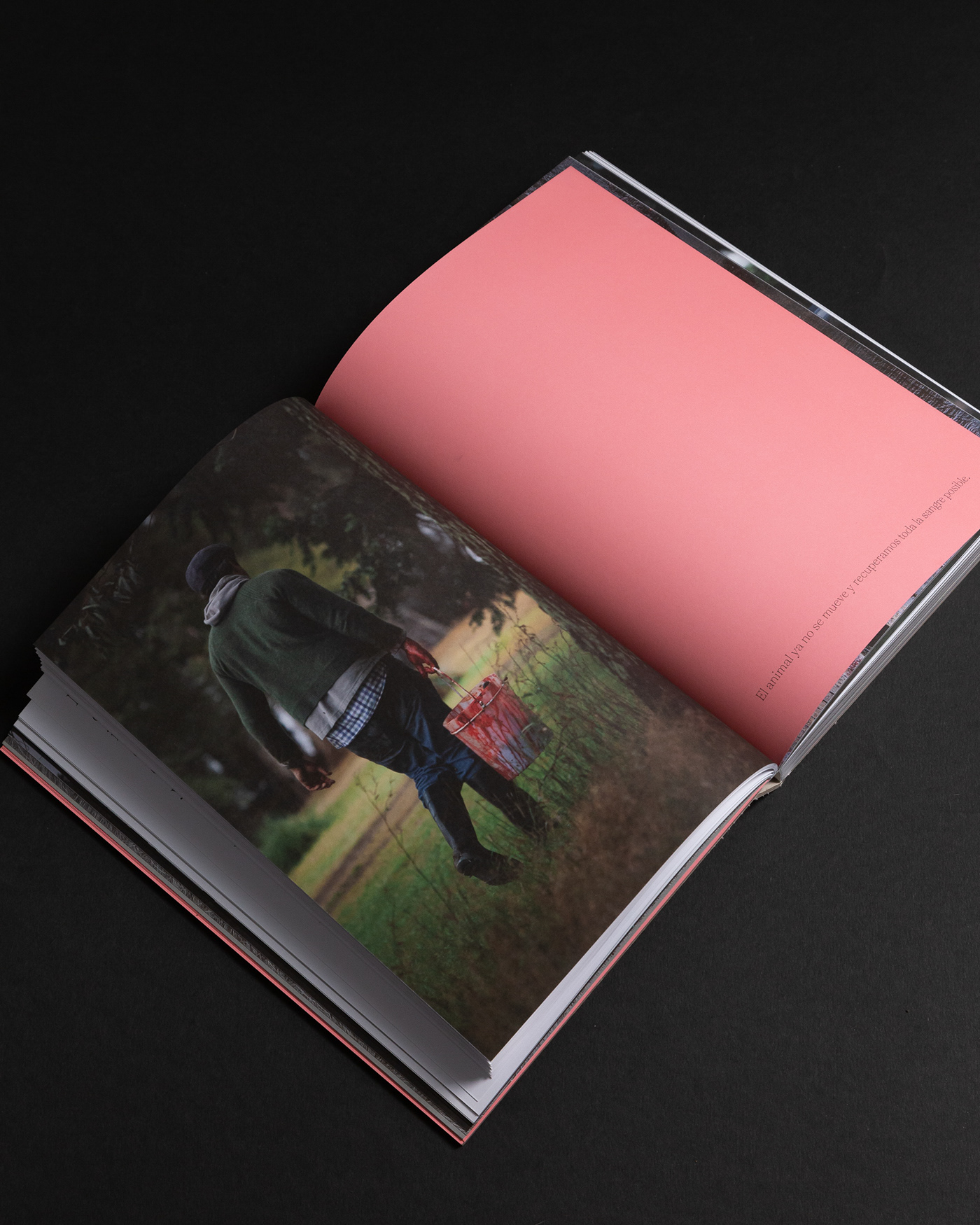

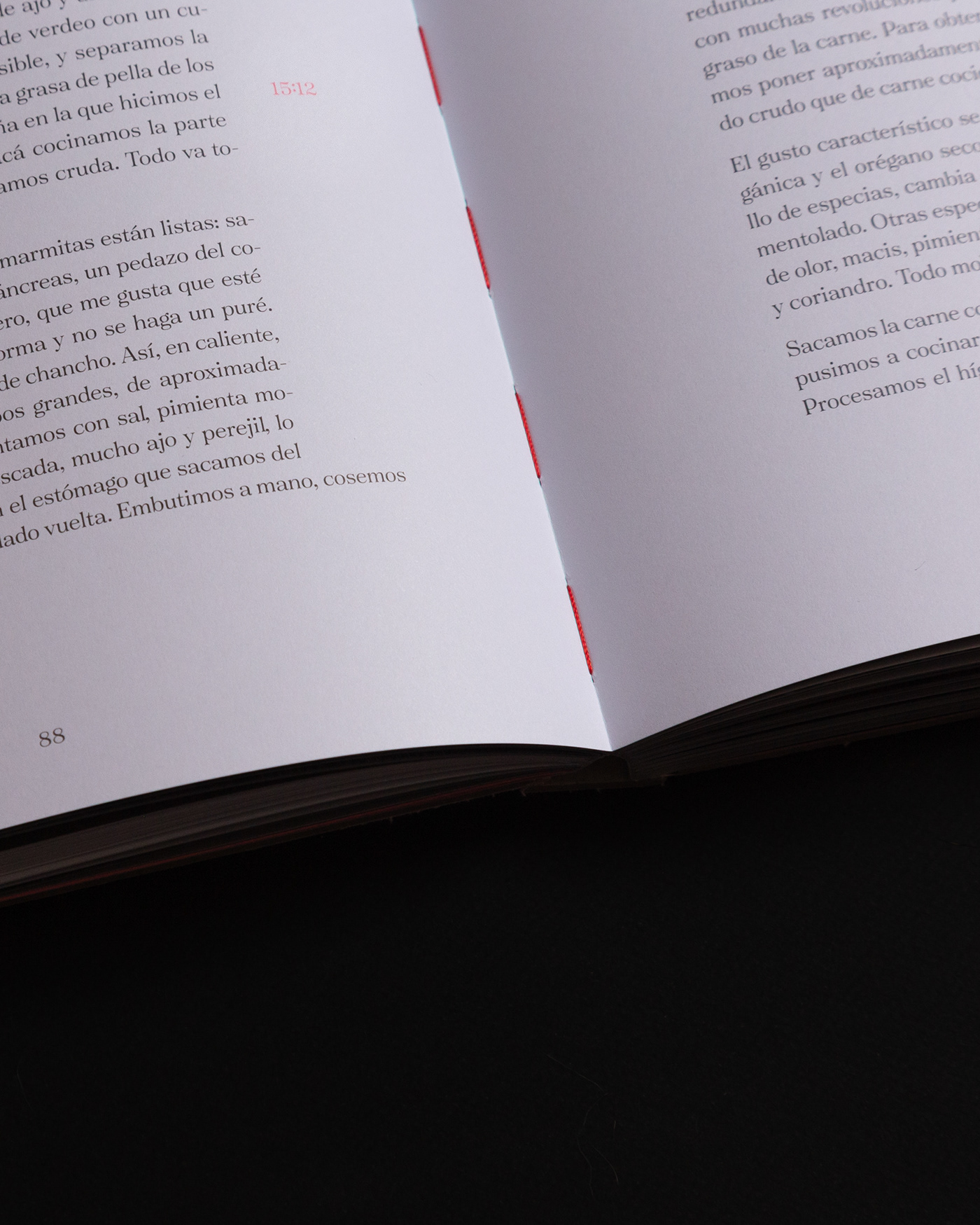
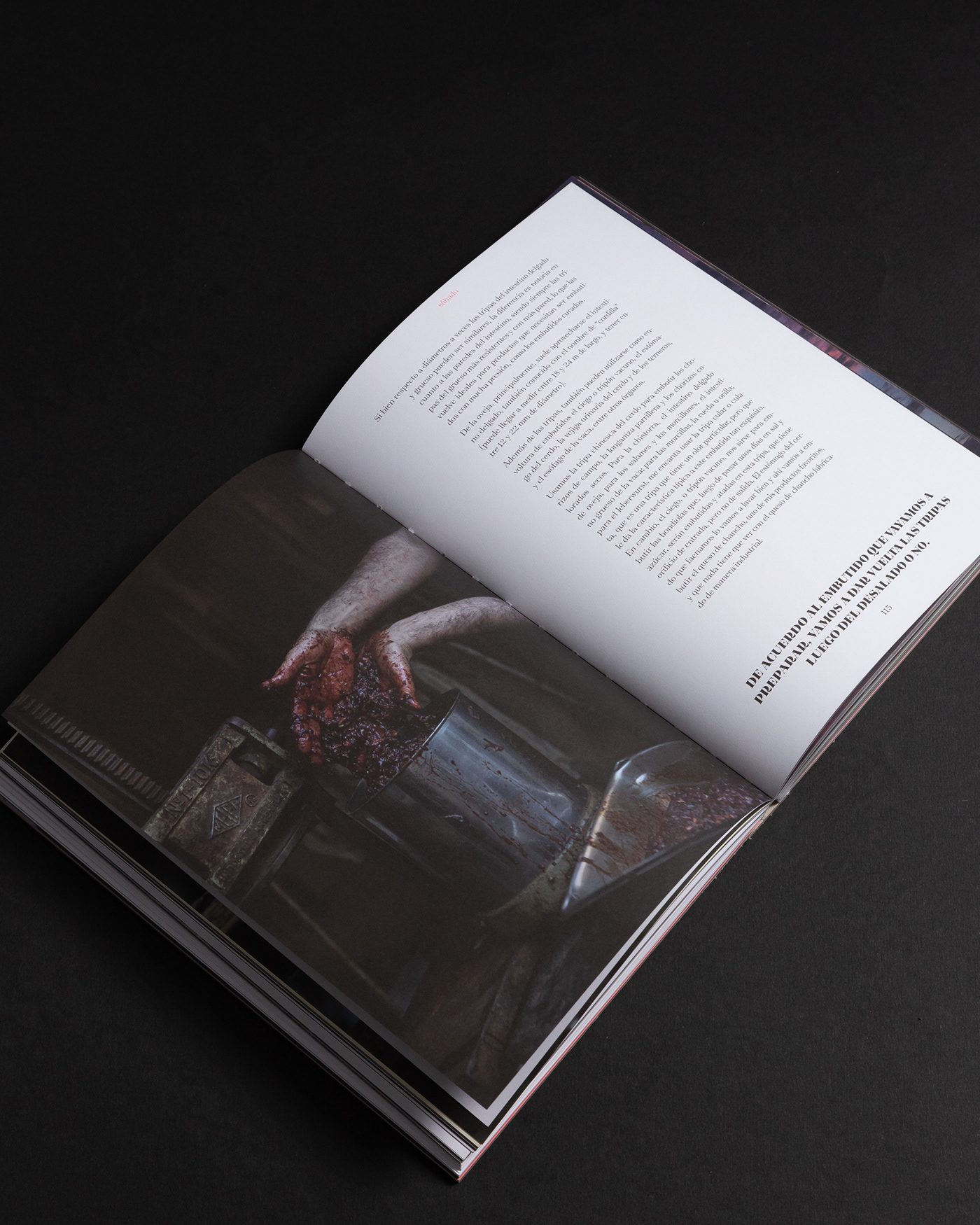
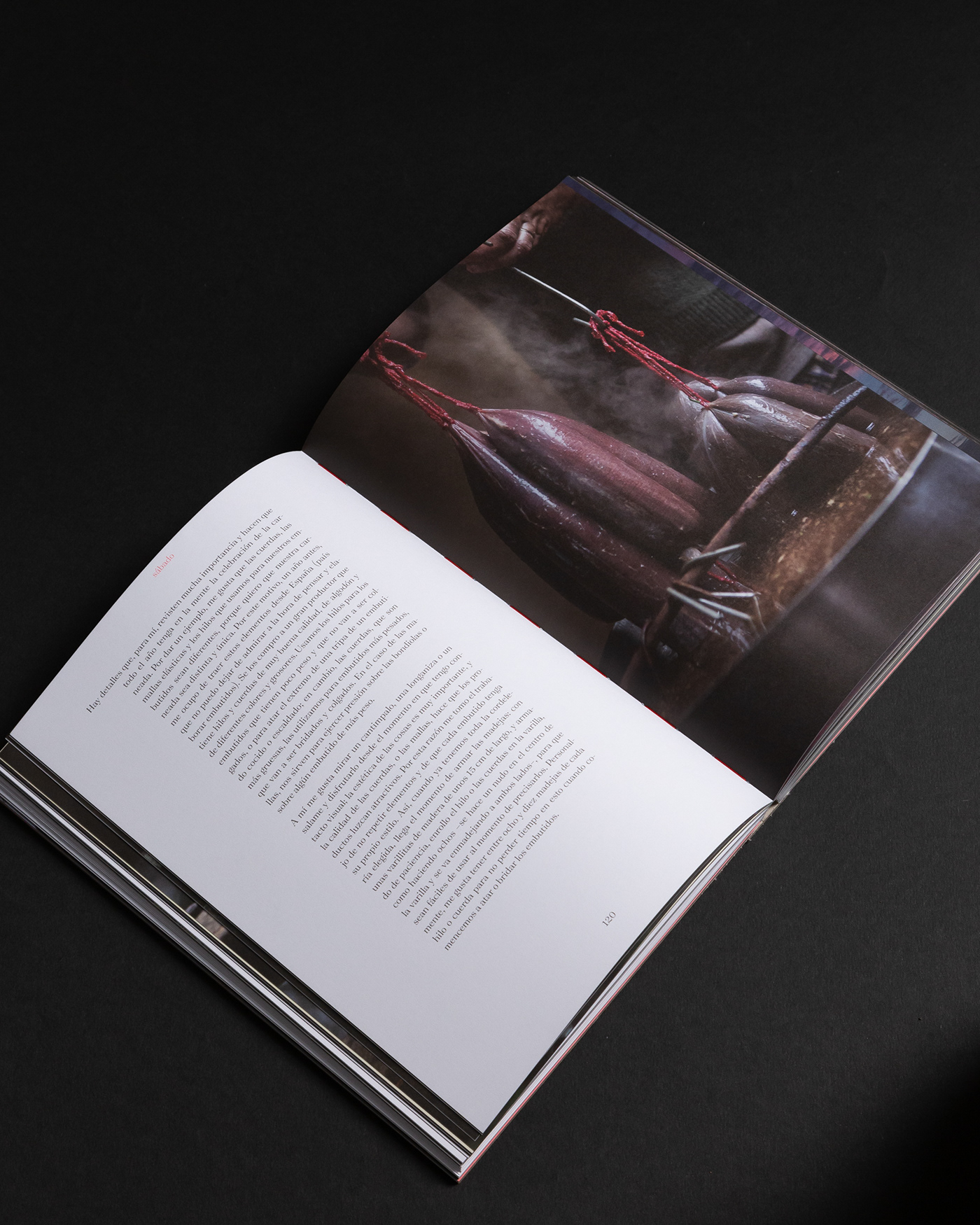
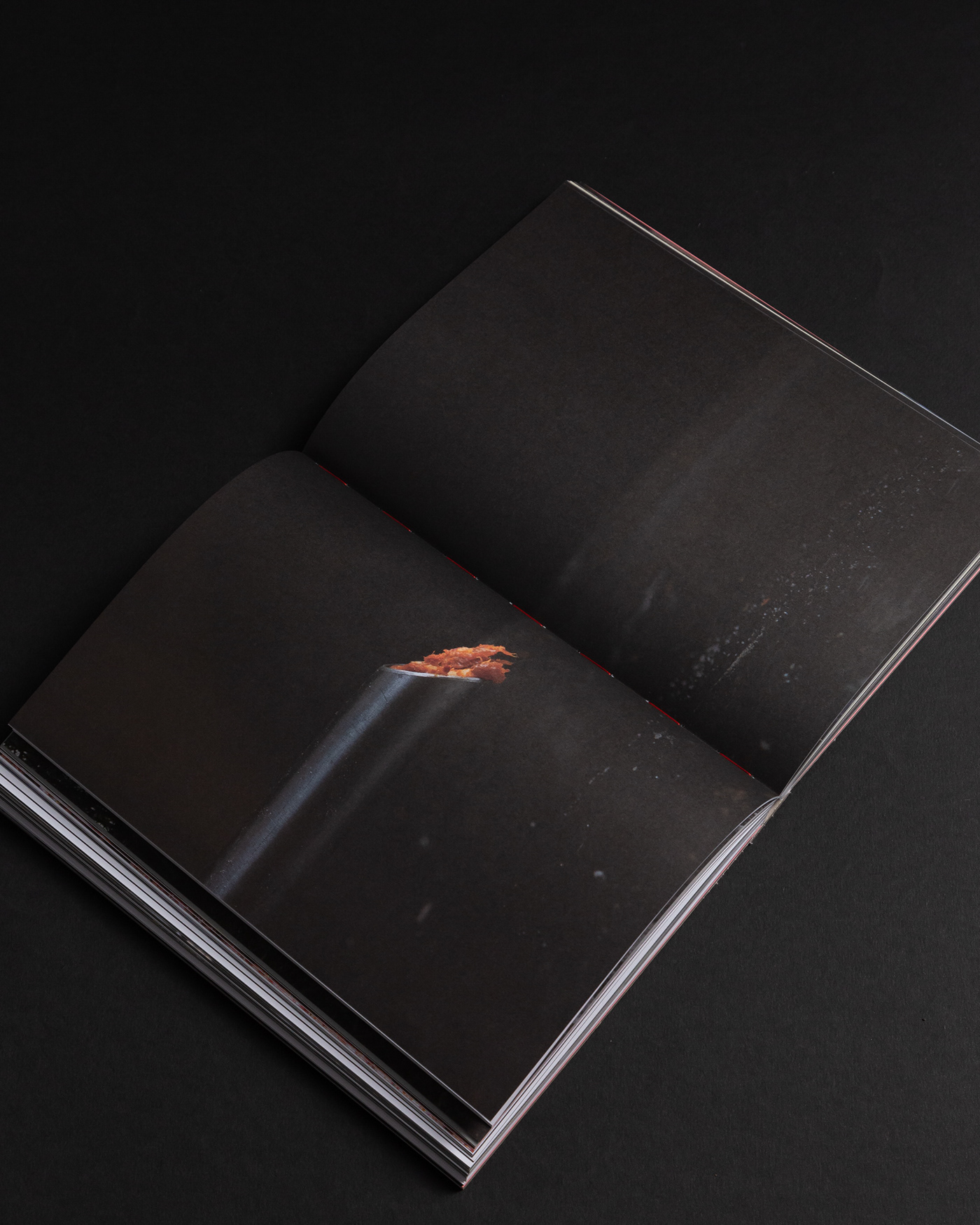



Créditos
Diseño Ezequiel Cafaro
Edición Victoria Blanco
Fotografía Eduardo y Joaquín Torres
Asistencia de fotografía Lucas Torres
Retoques digitales Eduardo Torres
Textos Juan Pedro Rastellino, Cecilia Spinetto
Corrección Martina Serrot
Producción gráfica Mariana Voglino y Verónica Álvarez Pesce
Publicado por Catapulta Editores
The book narrates the «carneada» of a pig that the author and a group of friends raise in a field in the province of Buenos Aires, for a whole year, to make sausages of the highest quality. When I arrived at the project all the impressive photos and texts were already produced. In the first meeting with the editor, the idea of hiding some photos came up and it occurred to me that the book should have a booklet folded with uncut edge and bound after page 32, on a more fragile paper, and that to access the more explicit images (the slaughter itself) the reader had to cut through the pages with... something. On one side, blank pages with the hour, on the other side the explicit photos.
I remember leaving that meeting very happy to have contributed this concept for a book that we knew was going to be unique, even before I sat down to make more graphic decisions like format, typesetting and composition.
In the interior, the text boxes start and end with a typographic line reminiscent of a seam to join the blocks. The binding is sewn with red thread, similar to the one used by Rastellino in his sausages.
The cover is made of plain greyboard + debossing, and the information on the book is screen-printed on fabric towards the spine, so that the cardboard is clean and raw, un-inked. Front & back cases are fully exposed boards (no wrap at all) with liner.


